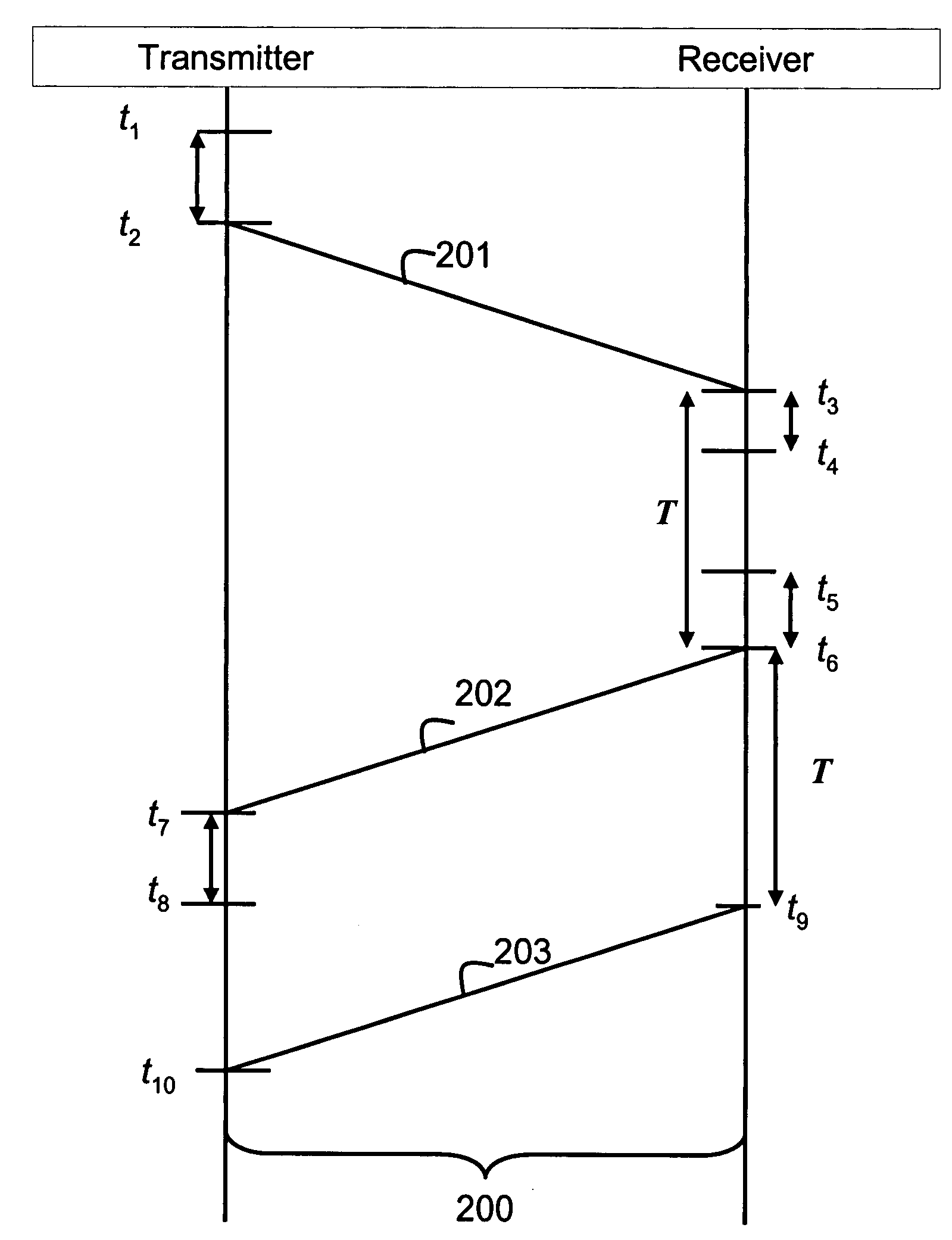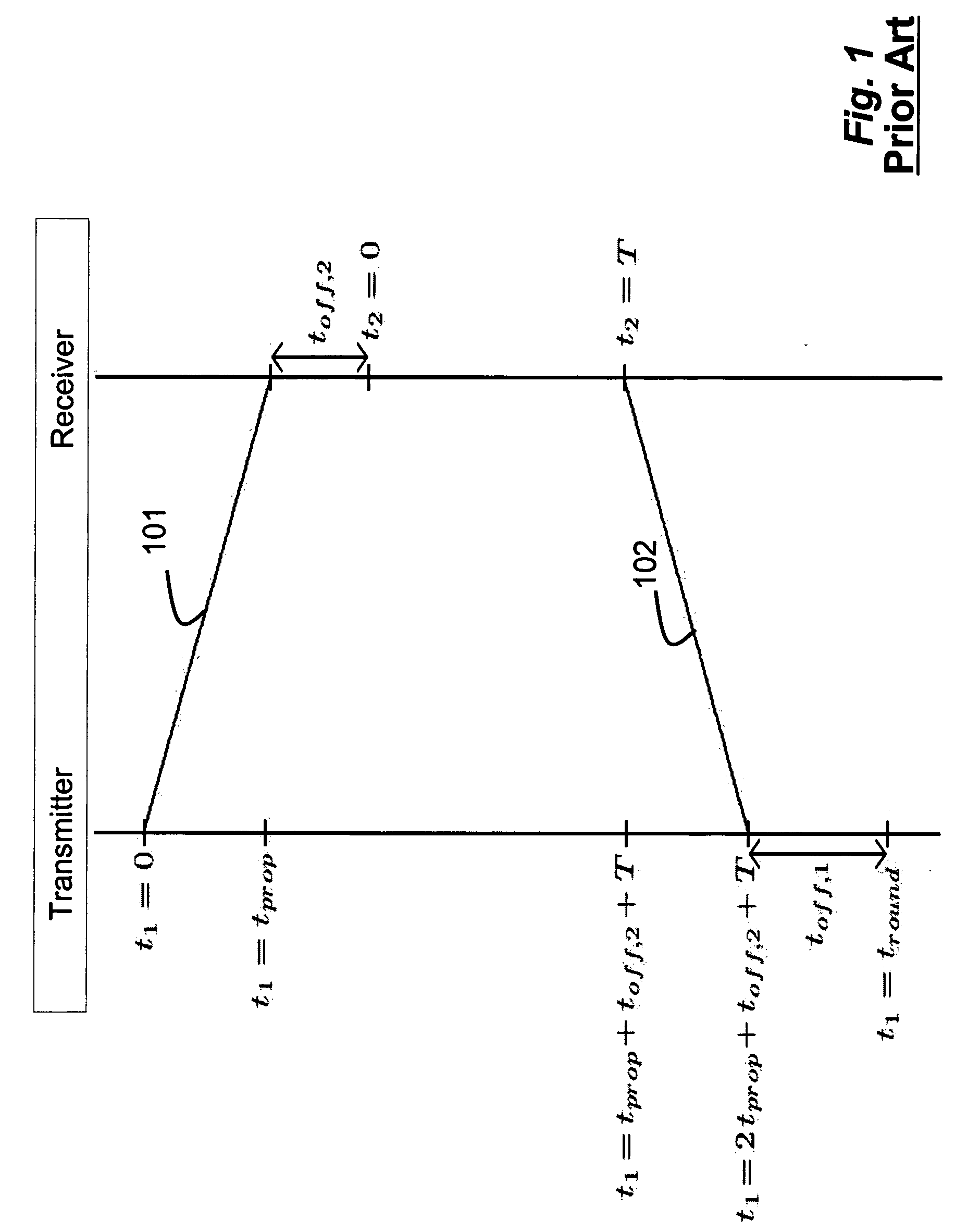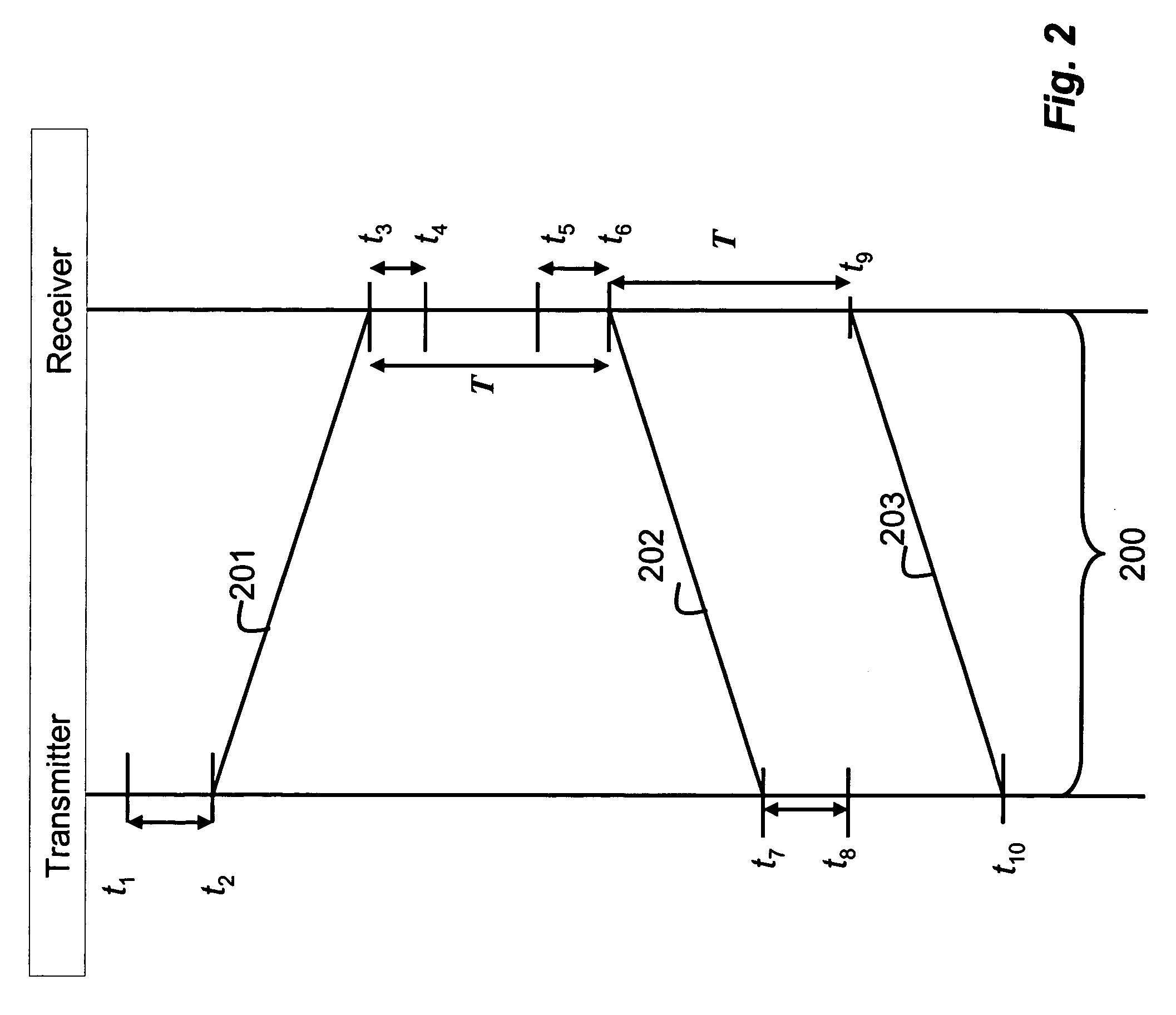Two-way ranging between radio transceivers
a radio transceiver and two-way ranging technology, applied in direction finders, instruments, synchronisation arrangements, etc., can solve the problems of increasing system complexity and overhead, too large estimated distances,
- Summary
- Abstract
- Description
- Claims
- Application Information
AI Technical Summary
Problems solved by technology
Method used
Image
Examples
Embodiment Construction
[0012] Our invention provides two-way ranging for estimating a distance between two radio transceivers in a wireless communications network. For the purpose of this description, a first transceiver that determines the distance is called the transmitter, and a second transceiver that participates in the distance estimate is called the receiver. However, it should be understood that both devices can transmit and receive for the operation of the invention, which uses two-way ranging.
[0013] In contrast with the prior art, we do not transmit additional information to correct for processing delays. We can also estimate drift rates between clocks of the transceivers.
[0014] As shown in FIG. 2, t1, t2, t7, t8, and t10 denote times according to local clock at the transmitter, and t3, t4, t5, t6, and t9 denote times at the receiver.
[0015] At time t1, the transmitter prepares to transmit a signal 201 to the receiver. The signal enters the channel 200 at time t2, due to a processing delay |t1...
PUM
 Login to View More
Login to View More Abstract
Description
Claims
Application Information
 Login to View More
Login to View More - R&D
- Intellectual Property
- Life Sciences
- Materials
- Tech Scout
- Unparalleled Data Quality
- Higher Quality Content
- 60% Fewer Hallucinations
Browse by: Latest US Patents, China's latest patents, Technical Efficacy Thesaurus, Application Domain, Technology Topic, Popular Technical Reports.
© 2025 PatSnap. All rights reserved.Legal|Privacy policy|Modern Slavery Act Transparency Statement|Sitemap|About US| Contact US: help@patsnap.com



